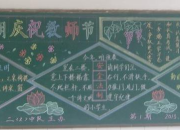关于写书信的格式
时间:2021-08-31 书信是日常生活中常用的文体,是用以交涉事宜、传达信息、交流思想、联络感情、增进了解的重要工具。书信一般可分为商务信件或公函(Business Letter or Official Correspondence)和私人信件(Private Letter)两大类。值得注意的是,英语书信的写法与汉语书信有一些明显区别,应特别加以区分。

英语书信通常包括下面几个组成部分:信端、信内地址、称呼、正文、结束语、签名、附件、再启等。下面我们将逐个进行介绍。
1.信端(Heading)
信端即信头,一般包括写信人的地址和写信日期。一些正式信函的信端还包括发信人或单位的电话号码、电报挂号、电传、传真和邮政编码等。
西方国家中有些信端甚至还有单位负责人的姓名、职务和职称等。
信端的目的是使收信人一看便知道书信来自何处,何时发出,便于复信和查阅。用一般的信纸写信时,信端应写在信纸的右上角,若字数较多,可从信纸中间或偏右的地方写起。若字数较少,可适当多向右移一些,使整个信端的重心落在右上角。
信端的写法主要有并列式和斜列式两种。从目前情况来看,前者更为常用。
采用并列式时,每行开头要左对齐;采用斜列式时,每行开头逐次向右移二三个字母的距离。
例如
(1)并列式
16 Fuxing Street
Haidian District
Beijing
Post Code: 100035
People’s Republic of China
Tel: 63211234
Aug. 20, 2004
(2)斜列式(Indented Form)
16 Fuxing Street
Haidian District
Beijing
Post Code: 100035
People’s Republic of China
Tel: 63211234
Aug. 20, 2004
写信端时,先写发信人的地址,地点的名称按由小到大的顺序排列,然后与其它项目和发信日期。具体次序是:第一行写门牌号和街名;第二行写区名、市(县)名、省(州、邦)名,往国外寄的信,还要写上国家的名称;国家名称的前面加上邮政编码,其后可写上电话号码,最后一行写发信日期。如果写信人的地址是机关单位的'名称,则将其作为第一行。如果写信人的单位没有门牌号码和街名,则第一行可写上所在班级或专业组的名称;第二行写系、科、室名称;第三行写学校名称;第四行写市(县)、省(州)名称;然后再写邮政编码、国名、电话号码、发信日期等项。
如果使用标点符号,则在每行末尾加逗号,最后一行的末尾加句号。但当前的信件中行末大都不加标点符号,但在每行之内该用标点符号的地方,仍要用标点。
特别要注意的是,门牌号码和街名之间要加逗号。月份和日期之间不可用逗号。在西方国家,城市名称之后往往写有字母或数字(如 New York, 103),表示城市的邮政编码。
Writing a Paragraph: Focus on Coherence and Unity
The last chapter discussed the importance of using good grammar and good word choice in your writing. However, the most grammatically perfect paragraph will not receive a good grade if it is poorly organized and not focused on a central idea. The paragraph must have unity and coherence. These ideas were discussed briefly in chapter 22, but in this chapter we will explore unity and coherence more fully so that you can learn how these elements impact your writing.
As you learned in Chapter 22, coherence is whether or not what you write makes sense and whether or not the ideas are arranged in a logical manner. If ideas are out of order in writing, then the reader has a very difficult time trying to understand your point. As a result the reader will lose interest and you will not be able to convey your point.
Unity is equally important. Unity means that your writing sticks to one point at a time. When you mix and match ideas in writing jumping from one idea to the next and back again, the reader has a hard time following you. Inevitably, the reader will not understand your point and will eventually lose interest. This chapter explores ways to help you make certain that your writing is both coherent and unified.
Writing a Paragraph: Devising a Plan -- Outline
Once you have generated a topic sentence and the details to support that topic sentence, it is time to organize your ideas. By organizing your ideas you will create a clear picture of the structure of your paragraph. The most efficient way to organize ideas is to outline them. With the aid of an outline you will be able to decide if you have enough supporting ideas for your topic sentence and you will be able to eliminate those details that do not support your topic sentence. The outline will also let you test various methods of organization to decide which one suits your topic sentence the best and let you test the placement of your topic sentence within the paragraph to see where it will have the greatest impact on the reader. With the use of an outline you should be able to create organized, coherent, unified, well-supported paragraphs.
Writing a Paragraph: Polishing, Proofreading, and Preparing Final Copy?Final Lines
The last step in the writing process is proofreading. After you have finished developing and supporting your ideas and after you have checked the organization, it is time to put the finishing touches on your paragraph. As your last step you need to check the spelling, punctuation, mechanics, and word choice of your paragraph as well as check to be certain you have a concluding statement. You cannot check all of these things in one reading so you should break the task into sections. First, check the punctuation and mechanics of your paragraphs. This means you are making sure you don't have errors like comma splices or fragments. You are also making sure you put question marks at the ends of questions and periods at the ends of statements.
The next step is to check your word choice and spelling. You want to be sure that you have used the correct words for your intended meaning, so you want to be sure that you haven't used a two when you need a too. Be sure to double check the spelling of any word you often misspell and look up any word you are unsure of. If you are word processing, use the spell check on your computer to help you with your possible spelling mistakes.
Writing from Reading
The first step when you write from what you read is to be sure you understand what you have read. To ensure your understanding, you should be an active reader. This means that you should read more than once with a different purpose each time, you should ask questions before, during, and after you read, and you should make notes as you read.
Once you have read actively, you will be prepared to write in a number of different ways. You will be able to summarize what you have read. That means you are accurately re-telling the author's main ideas in your own words. A summary also gives the major supporting details the author has used to support the main ideas. Once again though, summaries are written in YOUR words not the author's words.
Another method of writing about what you have read is to respond to the reading. When you respond to a reading, you pick out a particular point or idea that the author has made and then brainstorm to develop your own ideas based on the author's thought. Unlike summarizing, you are generating your own ideas based on the author's original thought.
Rather than generating a new idea, you may also choose to respond to an idea in the reading. You may agree or disagree with a point the author has made. In your writing, you will explain why you agree or disagree with that point. Once again, you are coming up with your own reasoning and your own wording in response to something you have read.
A particular type of writing you will be required to do is writing answers to essay tests. Essay test questions often ask you to read material and then either summarize the material or respond to it in a particular way. The one thing that makes essay test writing different from other writing situations is the time limit. In a testing situation you will carefully monitor your use of time and you won't put all of the polishing touches in that you would if you had unlimited time to complete the writing.
These are some of the ways you can tie the material that you read to the material you write. You will find that if you follow the advice given in this chapter that you will never be at a loss for a topic to write about.
Writing a Paragraph: Focus on Support and Details
In this chapter you will study the importance of being specific in the details you use to support an idea. When you write in vague, general terms, you leave the reader to interpret what you mean and often the reader will not have enough information to accurately do that. You must be clear in your meaning so that anyone who reads your work understands exactly what you want him to understand.
It is equally important that you provide enough information to support your ideas. Generally you need 3 to 5 examples per idea to be sure you've given sufficient support. The best way to develop support is to ask yourself questions about your ideas. You can evaluate the support at each stage of the writing process. Much of the work that you do in the rough lines editing is evaluating support and asking questions to be sure you have said enough to clearly communicate your ideas to your audience.
Once you have gathered together as many details as you think you need, you then organize them with a rough outline. This gives you another opportunity to check for sufficient support. Does each section of the outline seem developed? Is there more than one detail for each section? Have you used specific rather than general words as you've outlined? At this point you double-check the topic sentence to be sure it covers all your details. Always remember that the more details you put in the outline the more details will make it into your paragraph.
If you are at a loss for details, try turning to your senses. Asking questions about how something looks, feels, tastes, smells, and sounds can provide you with plenty of details. When you are describing an event ask questions like who, what, when, where, how, and why. Read the lecture below for further information on developing support and details for your writing.
【关于写书信的格式】相关文章:
1.书信格式怎么写
7.书信格式
8.书信的格式











